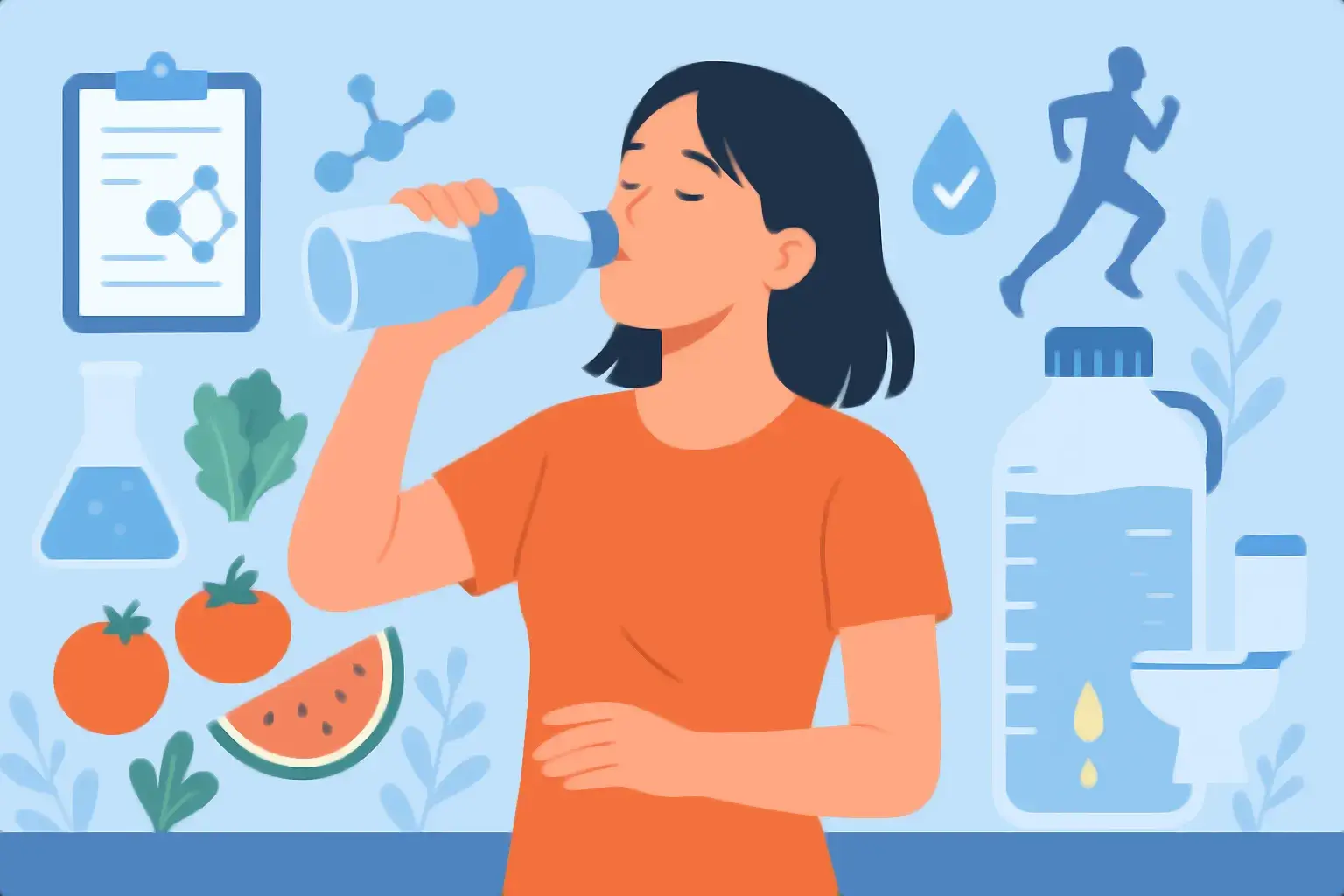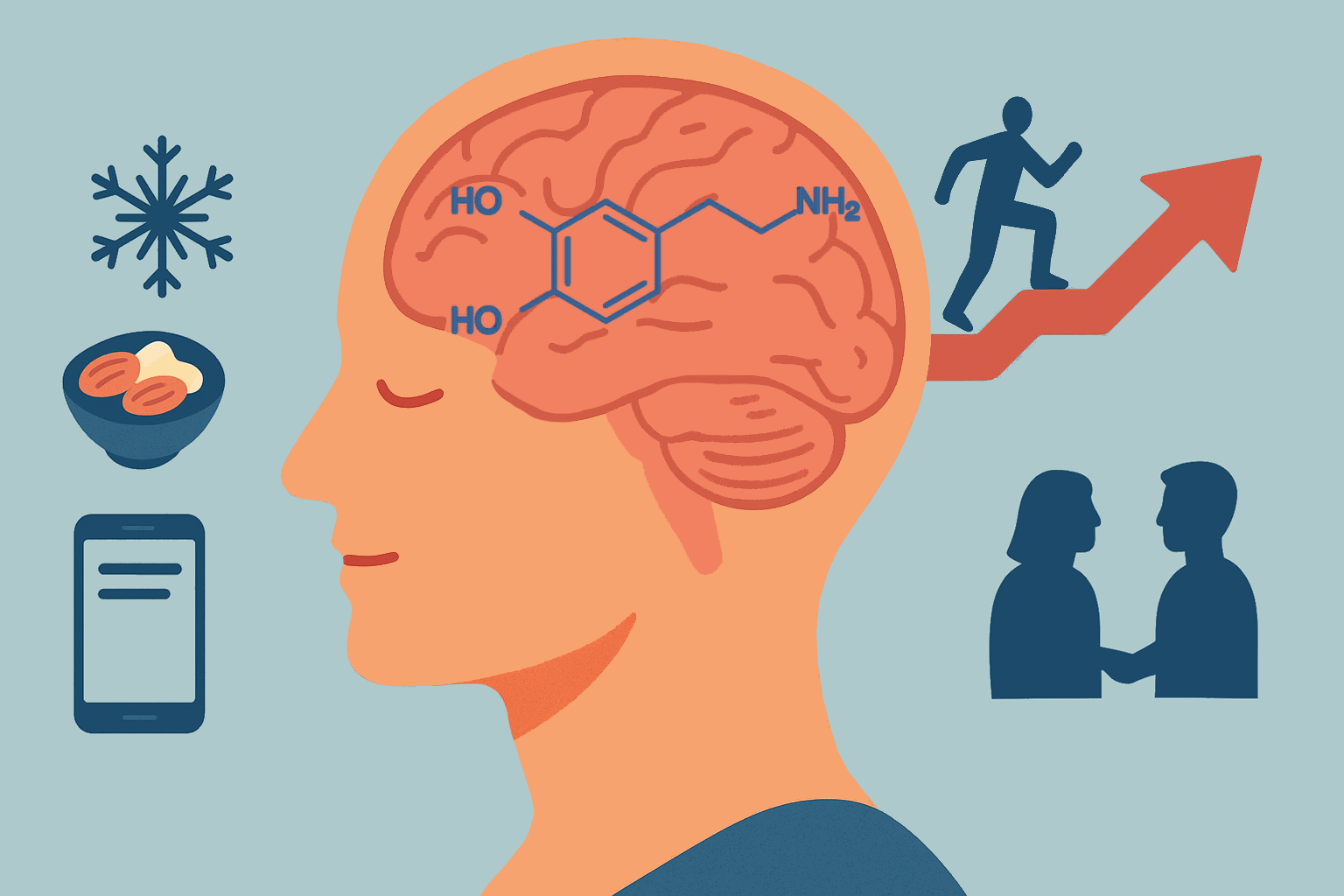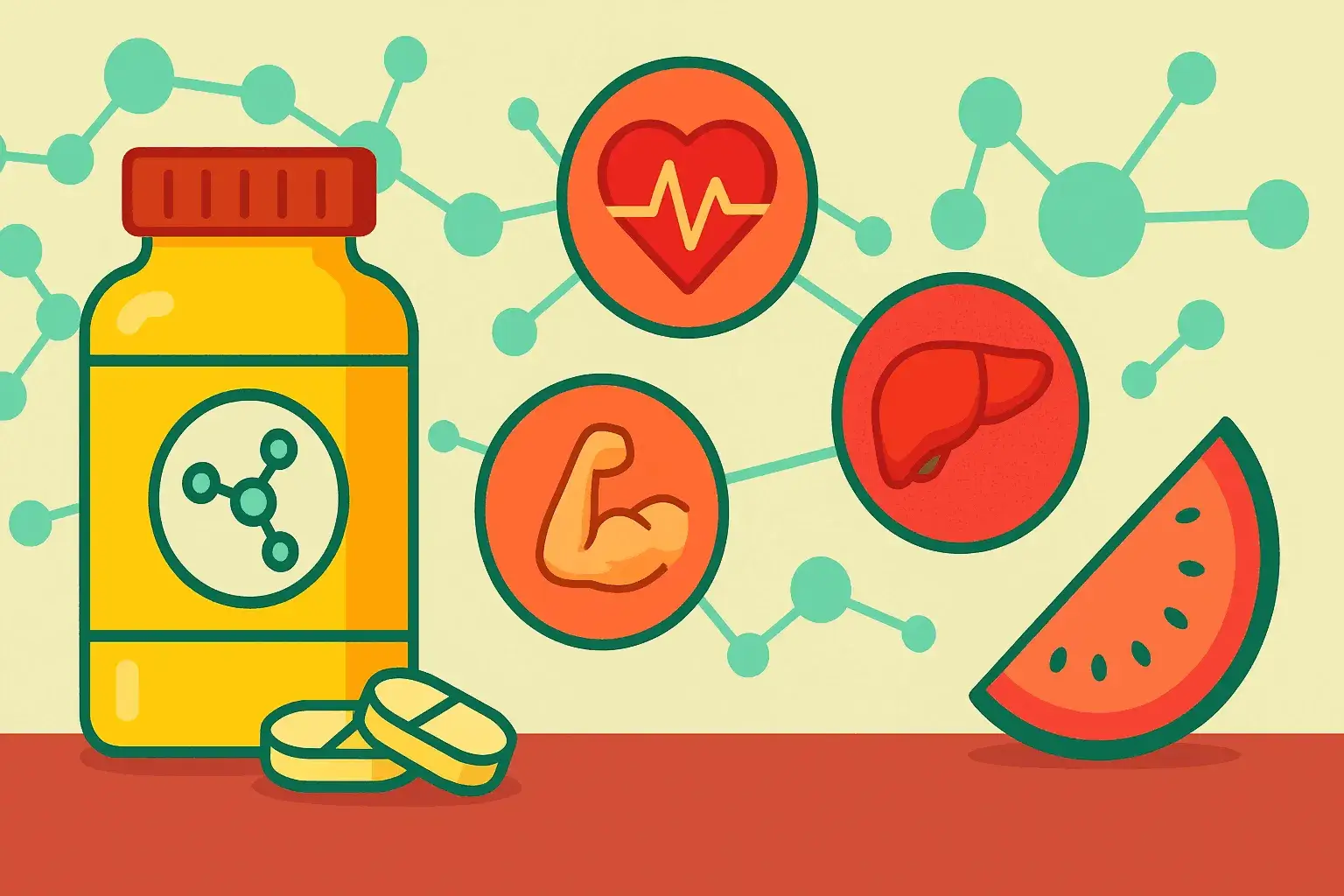
Optimal Hydration: Beyond the 2-Liter Myth
- Marcus Reed
- Health , Nutrition , Science
- June 29, 2025
Table of Contents
Fast Facts: Smart Hydration (TL;DR)
- Myth Debunked: The rigid 2-liter (or 8-glass) rule is not a universal scientific mandate. Individual needs vary significantly.
- Food Counts: About 20-30% of your daily fluid intake comes from foods like fruits, vegetables, and even soups.
- Listen to Your Body: Thirst is a reliable indicator for most healthy adults. Urine color (aiming for pale yellow) is also a great guide.
- It’s Not Just Water: Other beverages, including tea and coffee in moderation, contribute to your total fluid intake.
- Personalize Your Intake: Your hydration needs are influenced by your activity level, climate, health status, age, and body weight.
Rethinking Hydration: Why the 2-Liter Rule is a Myth
For decades, the advice has been unwavering: drink eight 8-ounce glasses—about 2 liters—of water daily. This simple rule has been repeated by health authorities and fitness gurus alike. But what if this one-size-fits-all recommendation is more fiction than fact?
Evidence-based science shows that our hydration needs are far more complex and personal. Forcing yourself to drink a specific amount of water, regardless of your body’s signals, isn’t just unnecessary—it overlooks the intricate ways our bodies maintain fluid balance. Let’s separate scientific reality from popular myth.
Where Does Our Fluid Really Come From?
The first mistake in the 2-liter logic is assuming that only plain water counts toward hydration. In reality, a significant portion of our fluid intake is cleverly disguised in our meals and other beverages. On average, food contributes about 20-30% of our total water intake [2].
Here’s a breakdown of common sources:
- Fruits and Vegetables: These are hydration powerhouses. A cucumber or head of lettuce is over 95% water, while watermelons and strawberries clock in at 92% [3]. An apple alone provides about half a cup of water.
- Soups and Broths: A bowl of soup, like borscht or chicken noodle, is predominantly water, making it an excellent source of fluids and electrolytes.
- Cooked Grains: Oatmeal, pasta, and rice absorb a large amount of water during cooking, which your body utilizes upon digestion.
- Meats and Fish: Even solid-looking foods contain a surprising amount of water. For example, chicken breast is about 60-65% water.
- Coffee and Tea: The old belief that caffeinated beverages are dehydrating has been largely debunked. While caffeine is a mild diuretic, the total volume of fluid from coffee and tea results in a net positive contribution to your daily intake [4].
Your Body’s Personalized Hydration Calculator
The rigid 2-liter rule fails because it ignores the dynamic nature of our bodies. Your true fluid requirements are a moving target, influenced by a host of personal and environmental factors [1], [6].
1. Body Weight and Composition: Larger individuals generally require more water than smaller individuals. Your metabolic rate, which is tied to body mass, influences fluid needs.
2. Physical Activity Level: This is one of the biggest variables. A sedentary person working in an air-conditioned office has vastly different needs than a construction worker or marathon runner. Intense exercise can increase your fluid needs by several liters per day to replace sweat losses.
3. Climate and Environment: Living in a hot, humid climate causes you to sweat more, increasing the need for fluid replacement. Similarly, high altitudes and cold, dry air can increase respiratory fluid loss, even if you don’t feel thirsty [6].
4. Health Status: Illnesses involving fever, vomiting, or diarrhea lead to significant fluid and electrolyte loss and require increased intake. Certain medical conditions, like kidney disease or heart failure, may require fluid restriction, highlighting the need for personalized medical advice.
5. Pregnancy and Breastfeeding: Women who are pregnant or breastfeeding have higher-than-average water needs to support the baby’s development and milk production [1].
Ditch the Quota, Trust Your Body

Instead of fixating on a number, a more practical and scientifically sound approach is to tune into your body’s natural signals.
- Drink When You’re Thirsty: For the vast majority of healthy, sedentary to moderately active people, thirst is an excellent and reliable indicator of the body’s need for fluid [7].
- Check Your Urine: Your urine color provides real-time feedback on your hydration status. Aim for a pale, lemonade-like color. If it’s dark yellow or amber, it’s a clear sign you need to drink more fluids [5].
A sensible guideline from The U.S. National Academies of Sciences, Engineering, and Medicine suggests a total daily water intake (from all foods and beverages) of:
- ~3.7 liters (125 ounces) for men
- ~2.7 liters (91 ounces) for women
For a 70 kg (154 lb) individual, this aligns with the common-sense advice of consuming 30-35 ml of water per kg of body weight. For this person, that’s 2,100-2,450 ml of total water. If 25% (around 600 ml) comes from food, their required beverage intake is closer to 1.5-1.8 liters.
Conclusion: Your Hydration, Your Rules
The “2 liters a day” rule is a well-intentioned but outdated oversimplification. True optimal hydration is about understanding your individual needs and listening to the sophisticated feedback system your body already has in place. By eating a diet rich in fruits and vegetables, paying attention to thirst, and monitoring your urine color, you can ensure your body gets exactly what it needs to thrive—no rigid quotas required.
Frequently Asked Questions (Q&A)
Q1: How much water do I actually need to drink every day?
Q2: Does coffee dehydrate you?
Q3: What are the best foods for hydration?
Q4: What are the easiest signs to check for proper hydration?
Disclaimer
The information provided on BioBrain is intended for educational purposes only and is grounded in science, common sense, and evidence-based medicine. It is not a substitute for professional medical advice, diagnosis, or treatment. Always consult a qualified healthcare provider before making significant changes to your diet, exercise routine, or overall health plan.
References
- Institute of Medicine. 2005. Dietary Reference Intakes for Water, Potassium, Sodium, Chloride, and Sulfate. (2005) "Dietary Reference Intakes for Water, Potassium, Sodium, Chloride, and Sulfate"
- Popkin, B. M., D'Anci, K. E., & Rosenberg, I. H. (2010) "Water, hydration, and health."
- U.S. Department of Agriculture, Agricultural Research Service. "FoodData Central."
- Maughan, R. J., & Griffin, J. (2003) "Caffeine ingestion and fluid balance: a review."
- Armstrong, L. E., et al. (2021) "Assessing Hydration Status: The Elusive Gold Standard."
- Yamada Y, et al. (2022) "Variation in human water turnover associated with environmental and lifestyle factors."
- Mayo Clinic Staff "How much water do you need to stay healthy?"
Tags :
- Hydration
- Daily water intake
- Fluid balance
- Hydration science
- Health myths
- Personalized nutrition
- Water from food
- Signs of hydration
- Athletic performance
- Healthy habits

